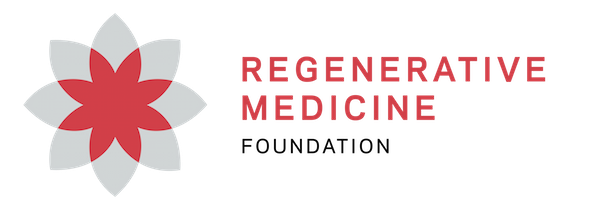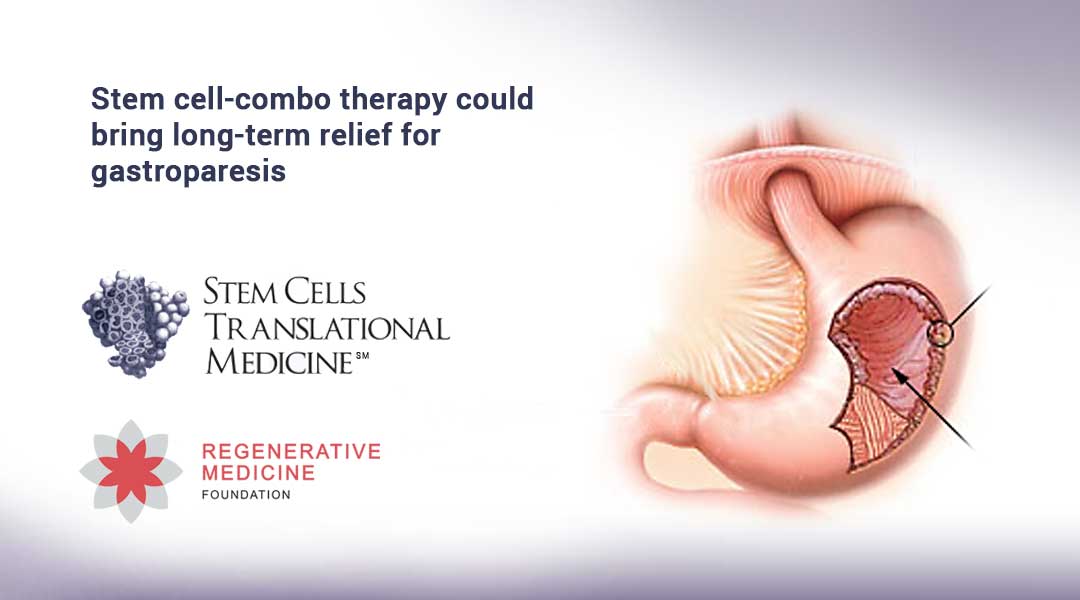Durham, NC – A new study released today in STEM CELLS Translational Medicine could provide a major breakthrough in finding a cure for gastroparesis, a painful condition in which the stomach is unable to empty itself of food. Among the symptoms are heartburn, abdominal cramps, nausea, vomiting and feeling full quickly when eating. In the most severe cases, patients can experience dehydration, malnutrition and bezoars — which occur when food hardens and, in turn, can block the opening from the stomach into the small intestine (the pylorus).
The study, led by Prabhash Dadhich, Ph.D., and Khalil N Bitar, Ph.D. AGAF’s laboratory, at Wake Forest School of Medicine, shows how transplanting neural stem cells in combination with interstitial cells of Cajal (ICCs) can restore the stomach muscles’ function and enable food to once again move normally through the digestive system.
Dr. Bitar explained, “ICCs are the ‘pacemakers of the gut.’ Neurons relax smooth muscle with help of ICCs. A reduction in both these types of cells in the stomach negatively impacts the activity and endurance of its smooth muscle cells, which are needed to push food into the small intestine. This inefficiency can lead to gastroparesis.”
“Current treatments – mainly medications, a change of diet and, in some cases, surgery – are all palliative solutions. They don’t bring long-term relief. However, several recent studies have shown the promise of transplantation of various stem cells and progenitor cells as an effective, long-term solution to this condition,” he added.
While different studies have reported survival and functional differentiation of various stem cells/progenitor cells in the embryonic gut or post-natal colon, they involved transplantation of neural stem cells or embryonic neural crest cells, not adult enteric neural progenitor cells (NPCs).
“We didn’t know whether enteric nervous system (ENS) derived adult neural-progenitor cells (NPCs) could migrate, proliferate and generate functional neurons in the postnatal pylorus,” Dr. Dadhich said. “ICCs are another critical factor in neuromuscular dysfunction and essential for long-term restoration of the neuronal functionality of the pylorus,” he added. “So in our study, we investigated how transplanting both cell types together would affect a dysfunctional pylorus.”
To this end, ICCs and enteric NPCs were isolated from rat duodenum and treated with fluorescent proteins, tagging them for tracking. Rat pylorus was harvested, and an ex-vivo neuromuscular-dysfunctional pylorus model was developed by selective ablation of the neurons and ICCs in the pyloric sphincter.
The ENS-derived NPCs and the ICCs were then simultaneously injected into this model of dysfunctional pylorus. The results showed that this combo approach did, indeed, help the injected cells survive and integrate with host muscle layers, just as the researchers anticipated.
“Our analysis also confirmed the reinstatement and restoration of the stomach muscles’ functionality, both of which are critical in the treatment of pylorus dysfunctionality,” Dr. Bitar said. “These findings are very promising. We hope this study opens avenues for future cell-based clinical applications.”
“More than 5 million people suffer from this gastric motility disorder and many more with the condition are undiagnosed,” said Paolo De Coppi, M.D., Ph.D., Senior Associate Editor of STEM CELLS Translational Medicine. “These results are certainly promising and this study opens avenues for future cell-based clinical applications to help these patients.”
###
The full article, “Functional Restoration of Ex-vivo Model of Pylorus: Co-injection of Neural-Progenitor Cells and Interstitial
Cells of Cajal,” can be accessed at https://stemcellsjournals.onlinelibrary.wiley.com/doi/abs/10.1002/sctm.19-0316.
About STEM CELLS Translational Medicine: STEM CELLS Translational Medicine (SCTM), co-published by AlphaMed Press and Wiley, is a monthly peer-reviewed publication dedicated to significantly advancing the clinical utilization of stem cell molecular and cellular biology. By bridging stem cell research and clinical trials, SCTM will help move applications of these critical investigations closer to accepted best practices. SCTM is the official journal partner of Regenerative Medicine Foundation.
About AlphaMed Press: Established in 1983, AlphaMed Press with offices in Durham, NC, San Francisco, CA, and Belfast, Northern Ireland, publishes two other internationally renowned peer-reviewed journals: STEM CELLS® (http://www.StemCells.com), celebrating its 38th year, is the world’s first journal devoted to this fast paced field of research. The Oncologist® (http://www.TheOncologist.com), also a monthly peer-reviewed publication, entering its 25th year, is devoted to community and hospital-based oncologists and physicians entrusted with cancer patient care. All three journals are premier periodicals with globally recognized editorial boards dedicated to advancing knowledge and education in their focused disciplines.
About Wiley: Wiley, a global company, helps people and organizations develop the skills and knowledge they need to succeed. Our online scientific, technical, medical and scholarly journals, combined with our digital learning, assessment and certification solutions, help universities, learned societies, businesses, governments and individuals increase the academic and professional impact of their work. For more than 200 years, we have delivered consistent performance to our stakeholders. The company’s website can be accessed at http://www.wiley.com.
About Regenerative Medicine Foundation (RMF): The non-profit Regenerative Medicine Foundation fosters strategic collaborations to accelerate the development of regenerative medicine to improve health and deliver cures. RMF pursues its mission by producing its flagship World Stem Cell Summit, honouring leaders through the Stem Cell and Regenerative Medicine Action Awards, and promoting educational initiatives.

